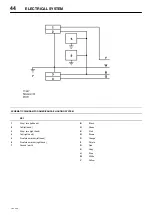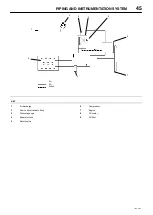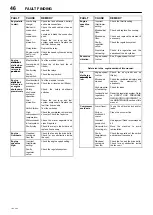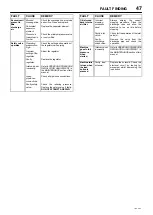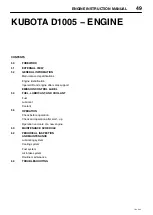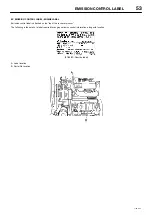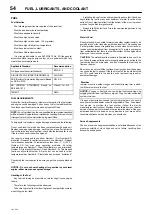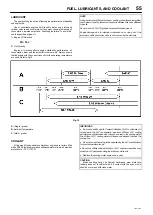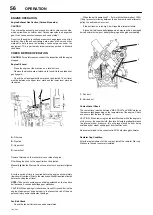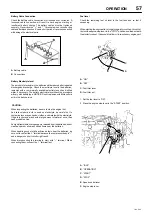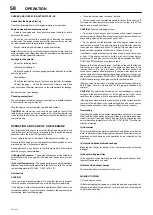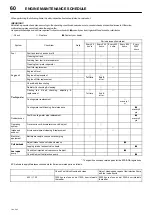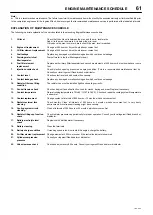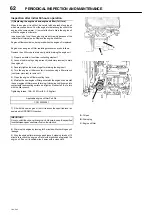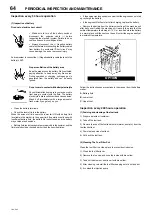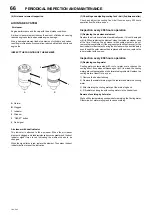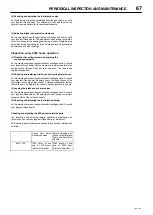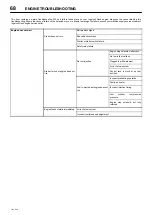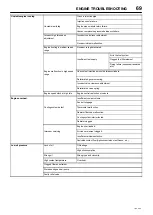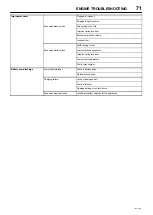
57
OPERATION
7/20, P65
Battery Cable Connection
Check the battery cable connections for looseness or corrosion. A
loosened cable connection will result in hard engine starting or
insufficient battery charge. The battery cables must be tightened
securely. Never reverse “+” and “
−
” terminals when reconnecting
cables after disconnection. Even a short period of reverse connection
will damage the electrical parts.
A
Battery cable
B
Connections
Battery Electrolyte level
The amount of electrolyte in the batteries will be reduced after repeated
discharge and recharge. Check the electrolyte level in the batteries,
replenish with a commercially available electrolyte such as distilled
water, if necessary. The battery electrolyte level checking procedure
will vary with battery type. NOTICE: Do not replenish with dilute sulfuric
acid in the daily service.
CAUTION:
When inspecting the batteries, be sure to stop the engine first.
As dilute sulphuric acid is used as electrolyte, be careful not to
contaminate your eyes, hands, clothes, and metals with the electrolyte.
If it gets in your eye, wash with a large amount of water at once, then
seek medical advice.
As highly flammable hydrogen gas is released from the batteries, do not
create a spark or allow any naked flame near the batteries.
When handling such metallic articles as tools near the batteries, be
sure not to contact the “+” terminal because the compressor body is “
−
”
and a dangerous short circuit might result.
When disconnecting the terminals, start with “
−
” terminal. When
connecting them, connect the “
−
” terminal last.
Fuel level
Check the remaining fuel oil level in the fuel tank and re
−
fuel if
necessary.
When starting the engine after a long storage (of more than 3 months),
first set the engine stop lever to the “STOP” position and then activate
the starter for about 10 seconds to allow oil to reach every engine part.
A
B
C
D
A.
“ON”
B.
“OFF”
C.
Fuel filter lever
D.
Fuel filter pot
1. Set the fuel lever to “ON”.
2.
Place the engine stop lever in the START" position.
A
C
D
F
E
B
A.
“IDLE”
B.
“OPERATION”
C.
“START”
D.
“STOP”
E.
Speed control lever
F.
Engine stop lever


